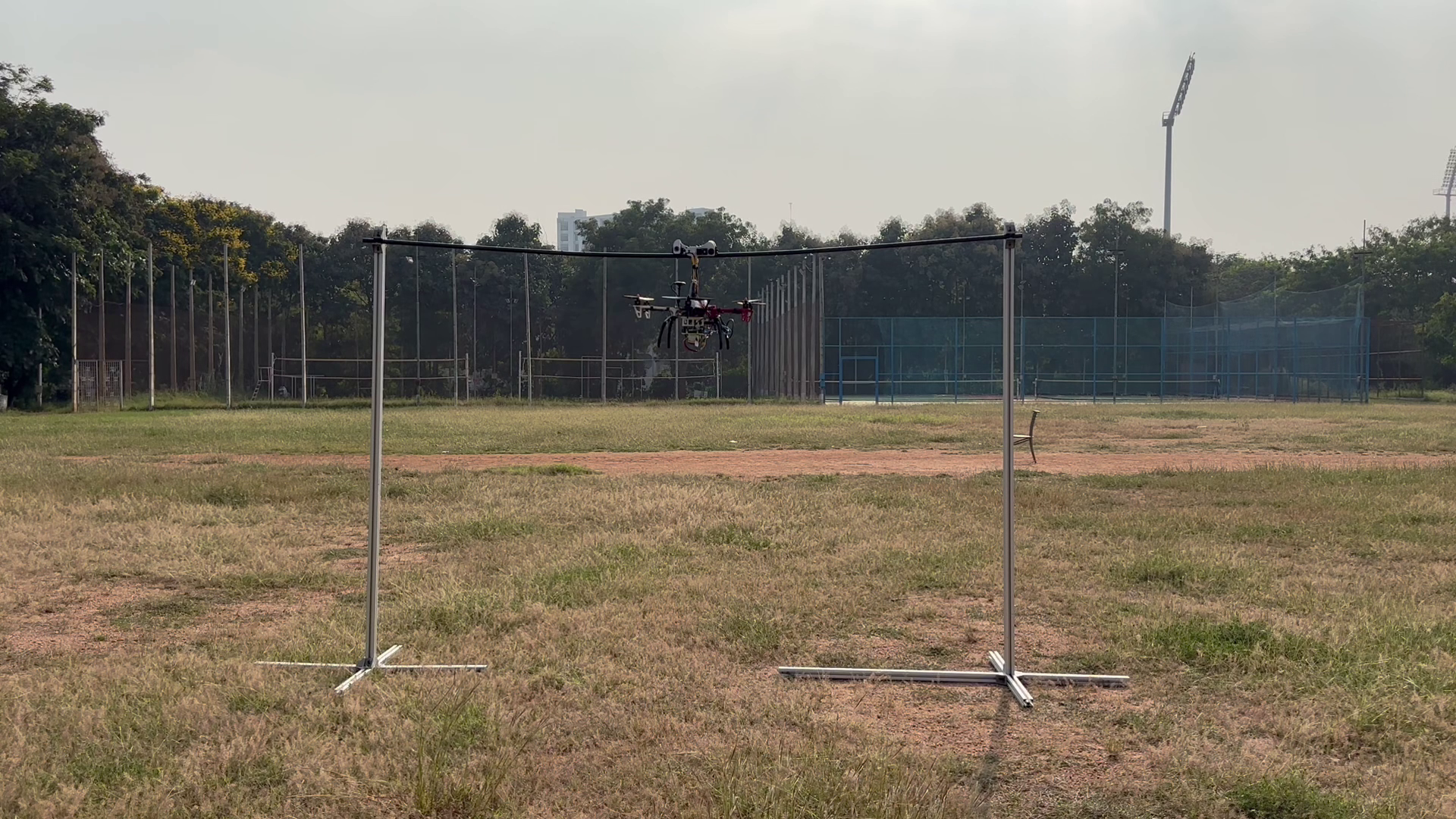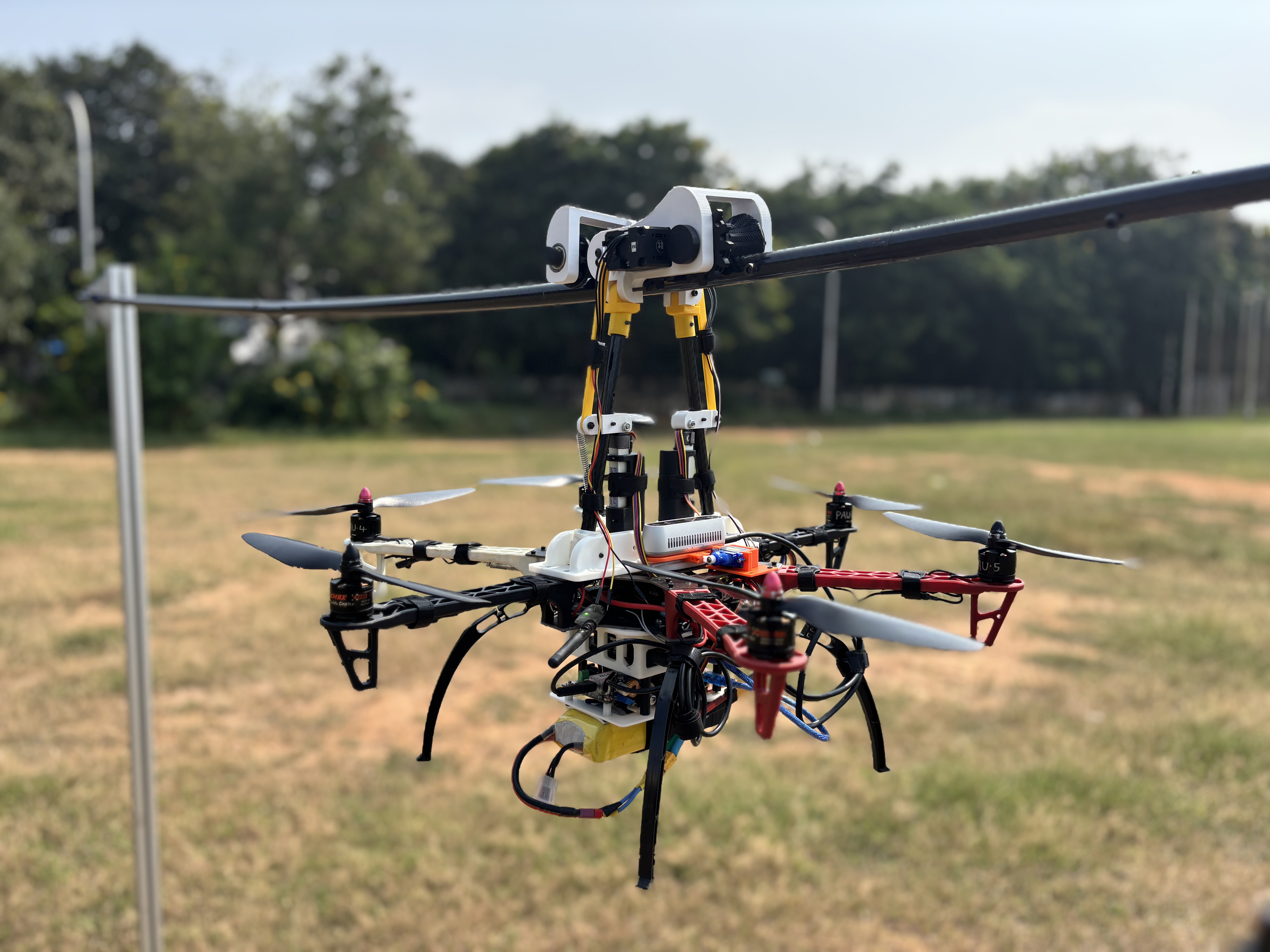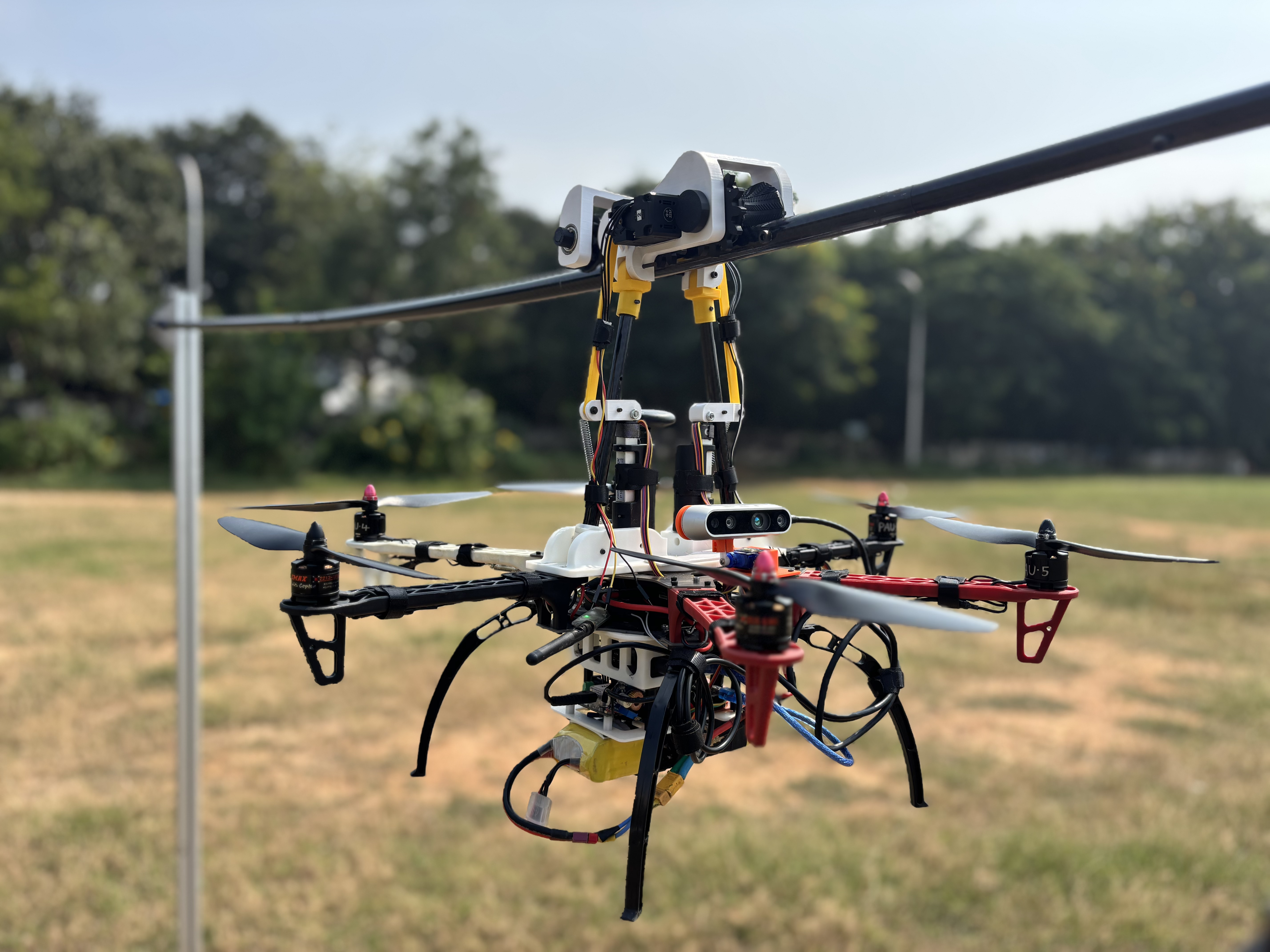Robotic inspection of transmission lines presents significant
challenges due to the complexity of navigating along the wires.
Existing robotic technologies often rely on either flight modes
for visual inspection or articulated crawling mechanisms for
contact-based inspection. However, these approaches face
limitations in effectively bypassing in-line obstacles or pylons,
which are common in transmission line environments. This paper
introduces WireFlie, a novel hybrid robotic system that
integrates rolling and flight modes to overcome these challenges.
The system consists of a pair of underactuated arms mounted on a
drone platform, designed for secure, collision free locking and
detaching, enabling seamless transitions between locomotion modes.
WireFlie supports both single-arm and dual-arm rolling, allowing
it to bypass in-line obstacles such as Stockbridge dampers, dual
spacers, and sleeves, and to overcome larger obstacles like pylons
using flight. Additionally, we propose a high-level controller for
autonomous locking, detaching, and obstacle avoidance. Experiments
are conducted on a custom-made setup that closely resembles a transmission
wire. We evaluate both the design and control aspects of our system, with
results including kinematic analysis, wire detection, autonomous
locking and the corresponding trajectory, and obstacle detection and
avoidance strategies. This research contributes to the field of robotic
infrastructure inspection by merging aerial and wire-based locomotion, providing efficient and autonomous monitoring of power lines.
|



